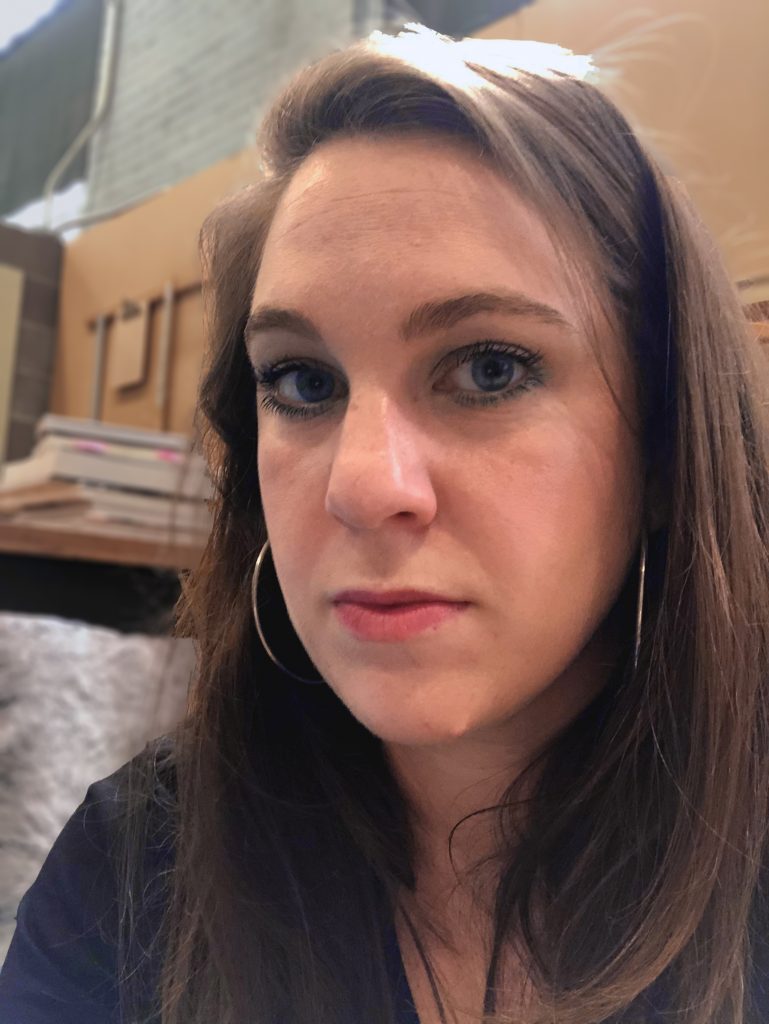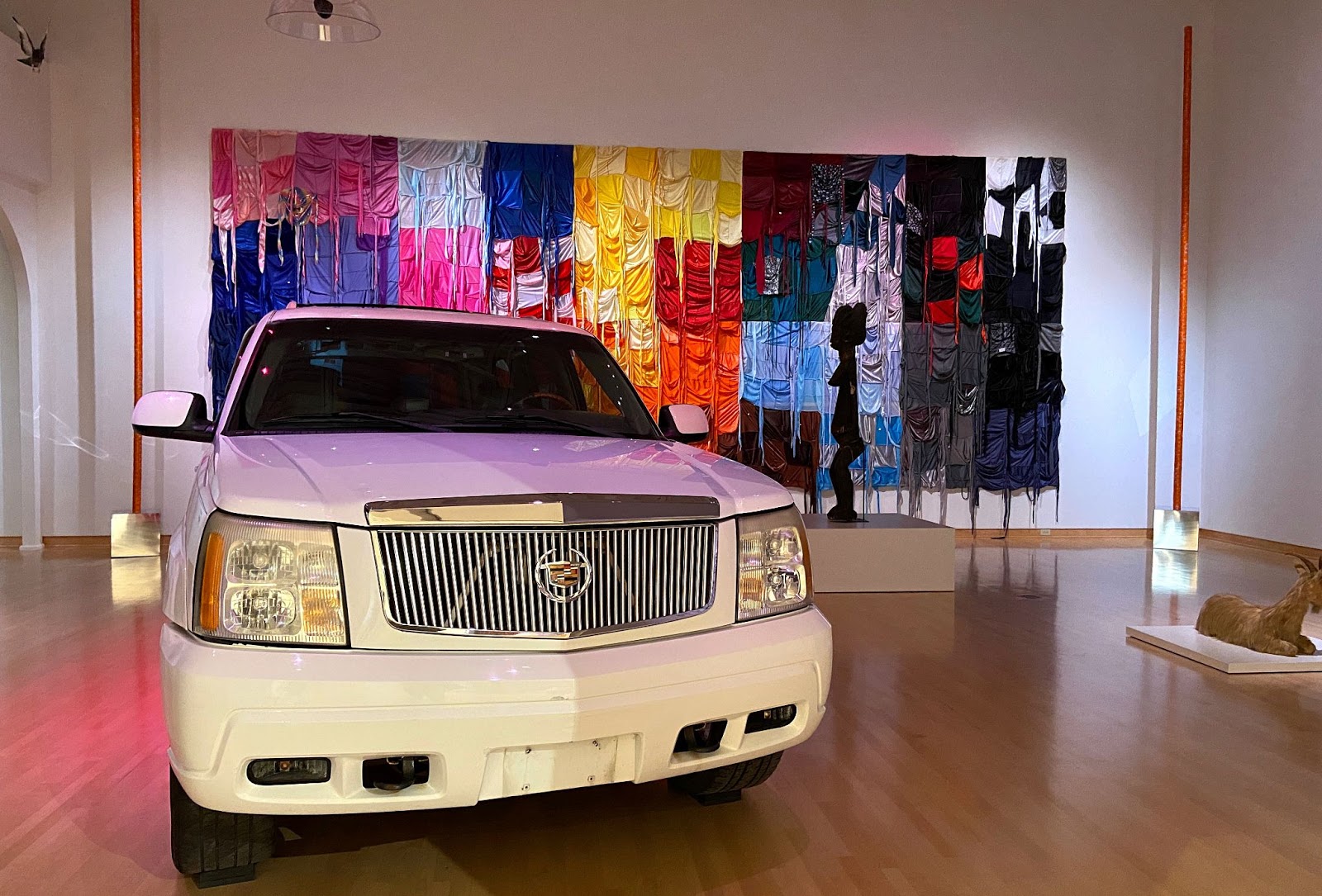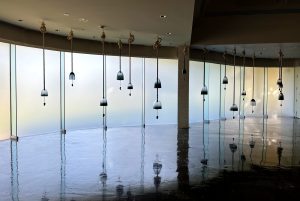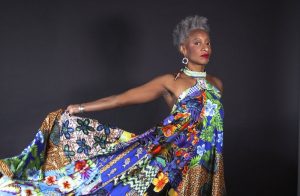For many, the museum is a sacred space: It is a reliquary for objects believed to be imbued with genius, experience, and emotion. Paintings, sculptures, and objets d’art are perceived fetishes and relics that offer gateways to a deeper understanding of oneself and the world we occupy.
Anthony Olubunmi Akinbola: Magic City at the John Michael Kohler Arts Center in Sheboygan, Wisconsin “explores the commodification of Black culture and the relationship between Africa and Black America through the lenses of fetishism and globalism.” The gallery handout continues, “the objects speak in different codes simultaneously, and their meaning changes depending upon the cultural knowledge and personal perspective of the viewer.” More than anything, Magic City presents objects that have been imbued with cool by association with ideas surrounding American Blackness. Products often used by Black people in the United States, particularly related to hair care, make up the bulk of Magic City’s materials list. This installation underscores the idea of culture as the greatest American export, and Black Americans as primary producers of said culture, despite not always receiving the economic and societal benefits.
In the last few years, it has become more expected to be able to experience the work of Black artists in museum spaces. These artists and their labor have historically been marginalized and erased in favor of maintaining a white, male, hetero “canon.” This erroneous canon has been the standard by which we measure and assign cultural importance, but has never been an accurate representation of American culture. Upholding white supremacy has been more important than capitalist interests, but that is slowly beginning to shift. It’s been an ongoing struggle to force institutions to yield to the reality of our society and a profitable multicultural, multiracial America — one that is often still met with resistance. Now, it’s hard to ignore the incentives for museum boards, who see an opportunity for cultural and capital profit, particularly in the wake of the Black Lives Matter movement and calls for diversity in all industries and spaces.
I was thinking about the idea of fetishization in relation to inclusivity, especially after spending the last year inundated with social media posts from institutions and corporations proclaiming to “do better” to be more inclusive and equitable. I felt particularly sensitive to these themes as I made my way through the New York-based artist’s installation.
In so many ways, Magic City is an exhibition I needed to see in the early 2000s, when I was a graduate student writing about the ways in which contemporary Black artists were informed by and utilizing the language of hip-hop in their artmaking, artwork, and professional promotion. In that sense, this exhibition feels nostalgic, a nod to the braggadocious, ostentatious aesthetic of hip-hop in the early 2000s. It’s an exhibition in which the objects initially appear to be about one thing (ideas of American Blackness), but in context and relation to each other, they complicate the superficial and stereotypical.
Magic City occupies a medium-sized room at JMKAC. The lighting is low, and a little pink. There are two entrances to the installation, both offering a similar panorama: large, colorful pieces on three of the four walls, and a white 2006 Cadillac Escalade slightly off center in the room, with other sculptural work throughout.
Hair as fetish is one of the most obvious themes; the exhibition is centered around hair, and hair as an expressive component of identity. In our white supremacist society, Black hair often becomes a rhetorical symbol of Blackness and the possibilities and limitations of the ways in which Blackness can be portrayed, conveyed, and expressed. Many of the materials used to create individual artworks are hair-related products: durags, combs, brushes, pomade.
The Black hair care product industry is incredibly lucrative: it’s worth over a billion dollars. The durag has long been used by Black American celebrities as high fashion, evolving it from a utilitarian object into an accessory. It’s also been used as an accessory by white celebrities who seek to profit from this proximity to Blackness without, of course, having to endure the oppression of white supremacy.
There are three large durag paintings in Magic City. Instead of paint on canvas, durags have been sewn together to create massive, colorful tapestries. They point to abstract expressionist work, with the pooling of the ties on the floor recalling drips down the edges of a canvas. They’re nods to tapestry and fiber-based artwork, like El Anatsui’s.
Touching and engaging with one’s own hair and sharing hair care routines is intimate and personal, a means to express individuality, not unlike making artwork. “All of these materials refer to Blackness and the politics of Black hair in America,” Akinbola says in the gallery handout. He continues, “They also happen to be mass-produced, readymade objects that have significant cultural capital in the Black community.” There are multiple levels of engagement available to the viewer: Is this an item I use? Am I only able to engage with it as a stand-in for the “politics of Black hair in America?” Am I developing a relationship to this object because it has been modified and placed in this museum space? Are these materials that I’d notice outside of this context?
There are three very tall totem sculptures in the exhibition. The totems are placed on mirrored boxes, reminding me of both the mirrors on the benches at shoe stores and glitzy contemporary furniture. Atop these boxes are sky-high towers of Murray’s pomade cans, all carefully stacked and gorgeously repetitive. I’m not sure if there are exactly the same number of pomade cans as there are durags, but the suggestion is there through the placement of the paintings and the sculptures.
The most graphic piece in the exhibition is a wall-sized installation of hair picks. They look like a murmuration of birds, with a larger cluster in the center and picks fading toward the edges of the wall. They’ve been embedded directly into the wall, some bending and twisting as if they have been forced in there, while others seem to have grown right out of it. The stark contrast of the black picks against the white wall creates a Very Instagrammable Moment, and I saw a handful of people snap some selfies in front of it. Akinbola says the 401 picks “speak to protest in the gallery space, defiance within its four white walls. They’re also a reference to 401 years of slavery. I feel slavery is the middle ground between Black America and Africa.”
Though there aren’t any wall labels or titles, I found a title for one of the sculptures on the gallery handout: No Weapon Fashioned is a figural sculpture with brush handles protruding from its body. The title seems to reference the countless times unarmed Black people have been killed by police. I wish there were other titles available; I think this would have built stronger lines of dialogue between the artworks.
The 2006 white Escalade, a status symbol of luxury transportation, has here been transformed into a sound sculpture. At seemingly random intervals, two speakers suspended from the ceiling emitted music that was the sound of the bass of a rap song as heard from outside a vehicle with an impressive sound system. It was a bit of a strange disconnect, having the sound come from above instead of inside the car, and it wasn’t on a regular loop. As I stood around waiting for the sound to come on, I felt awkward waiting near the car or, more accurately, under the speakers, because the car wasn’t an interactive object.
At the main entrance to the exhibition, just outside the installation space near the wall text, is a wall-mounted vitrine that holds a Jesus piece. The sculpture appears to be made of carved wood and is painted purple with “diamond” embellishments in the eyes and crown. It definitely does not have the flash and bling of the Jesus pieces you might see on rappers, which are usually gold or platinum and encrusted with gemstones. Instead, this object feels like a fetish, a carved thing meant to be a stand-in and receptacle for prayers and wishes, and maybe a little bit of magic. It’s a literal manifestation of the ideas outlined in the introductory wall text.
Magic City left me with the same feelings I’ve had after listening to a lot of early 2000s hip-hop: it’s really fun, with hot beats and quippy lines that stay with you. It feels cool to signal to your peers that you’re up to date on the hottest new thing. In my youth, there was no Instagram, so performing one’s “wokeness” and “coolness” was different. Now, you can simply post a selfie. That’s where this exhibition was successful for me: in thinking about it as a commentary on the ways in which we are obsessed with “cool” and export it globally.
It’s really elitist and limiting to think that there is a single, solemn way to experience Art in a Museum, that it needs to be a quiet, contemplative experience. It doesn’t have to be, but it can be that for many people. It can also look like spending more time taking photos of the work than actually looking at or experiencing the work. That happens in so many exhibitions, especially trendy contemporary installations. It’s a way for visitors to do the marketing work for the institution for free, and also gain further distance from the objects, the artists, and sometimes the context, both literally and figuratively. And it’s in that space that Magic City exists: It’s cool and colorful and full of recognizable material goods you can understand in a real world context. There are the objects that we worship (nice cars, fancy jewelry, artwork), and the ideas that those objects point to (culture, capitalism, cool).
The last paragraph of the gallery handout states: “By tracing the arc of fetishism from Africa to contemporary America, Magic City challenges perceptions of cultural and racial identities by prompting us to question what makes an object “African,” “Black,” “White,” or “American.”” There is an opportunity for viewers to engage this idea for each and every object, and reflect on the exhibition as a single installation. The through-line, though, seems to be the idea of removing objects from their original context (religious sculptures from Africa, hair products from a Black American household) and presenting them in differently contextualized spaces where audiences may not be familiar with their histories and uses. In Magic City, the artist selected each object and placement and it is through his perspective we are initiated.
As a “geriatric millennial,” most of the imagery of this exhibition speaks to a very specific time period of my youth, when proximity to and performing cool were front of mind. The ways we were investigating cultural and racial identities were different, often less nuanced. Magic City encouraged me to think about the evolution of these conversations, both personally and professionally. I found using hair and early 2000s hip-hop as broad themes helpful in thinking about the installation, and the ways in which I’ve participated in systems of commodification and fetishization of Blackness.
This exhibition was most successful when I considered the artwork of a young, Black artist in an historically white space, in an historically white town, as a type of fetish. Magic City becomes a meta narrative on the commodification, consumption, and coveting of Blackness in America, one that often erases the Black people’s lived experiences. The exhibition is distilled to be a commodity in and of itself, something to be shared on social media. As a single work of installation art, Magic City is bright, colorful, and enticing — it’s an Instagram-worthy exhibition that also asks the viewer to consider context and the impulse to commodify.
Anthony Olubunmi Akinbola’s Magic City is on view through July 11th.
Featured image: Installation view of Anthony Olubinmi Akinbola: Magic City at the John Michael Kohler Arts Center in Sheboygan, WI. A white 2006 Cadillac Escalade is pictured from the front. Behind the SUV are several sculptures: two tall, orange totems on shiny boxes and a sculpture of a woman on a white pedestal. To the right of the car is a taxidermied goat, lying on a very short white pedestal. On the wall is a large, multicolored tapestry painting. Photo by Jessica Hammie.

Jessica Hammie is a writer based in Champaign, Illinois. She is interested in the ways in which artists visualize identity, and how we come to understand our histories. In addition to writing for Sixty, Jessica is a Managing Editor at Smile Politely, a Champaign-based culture magazine.






